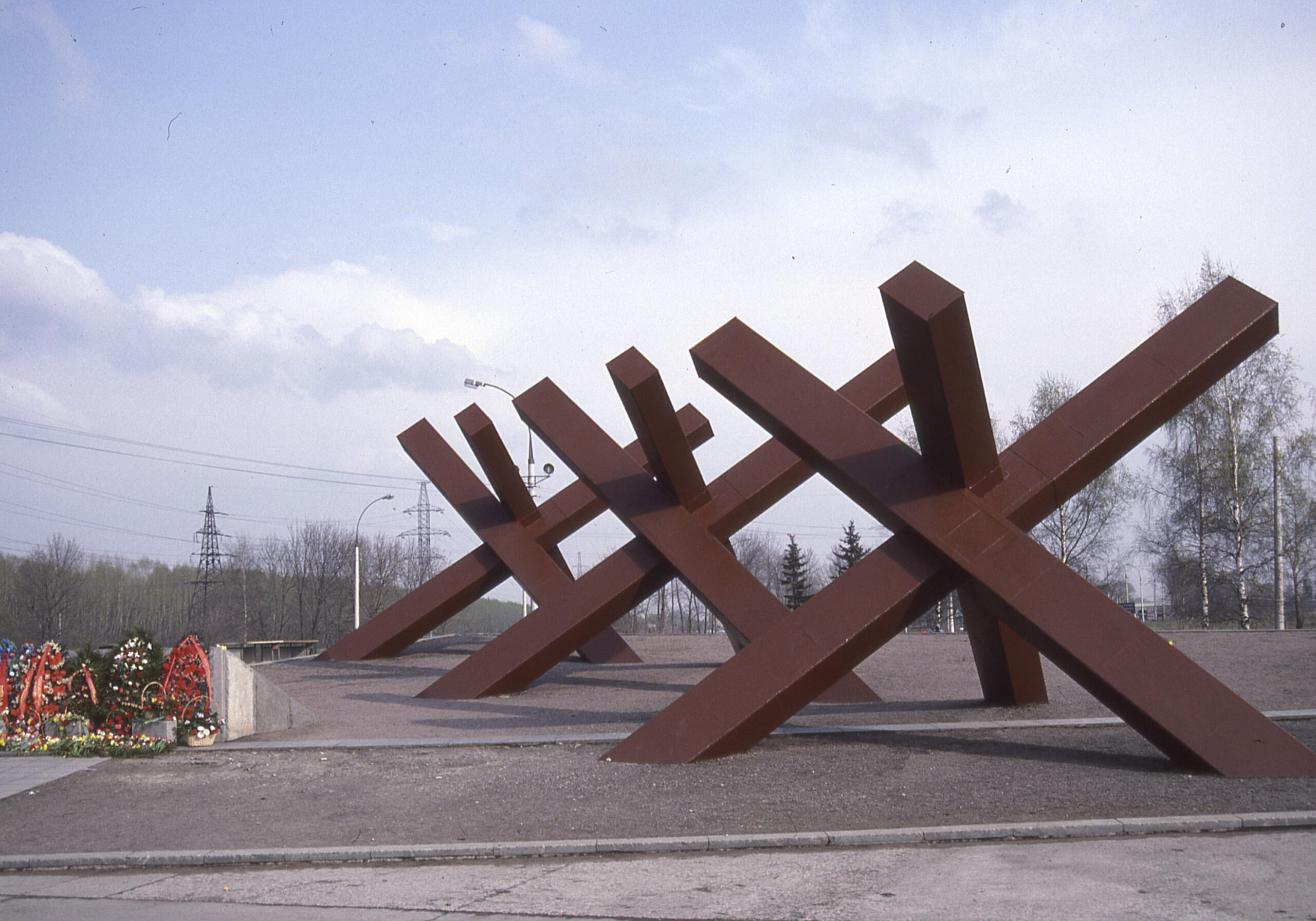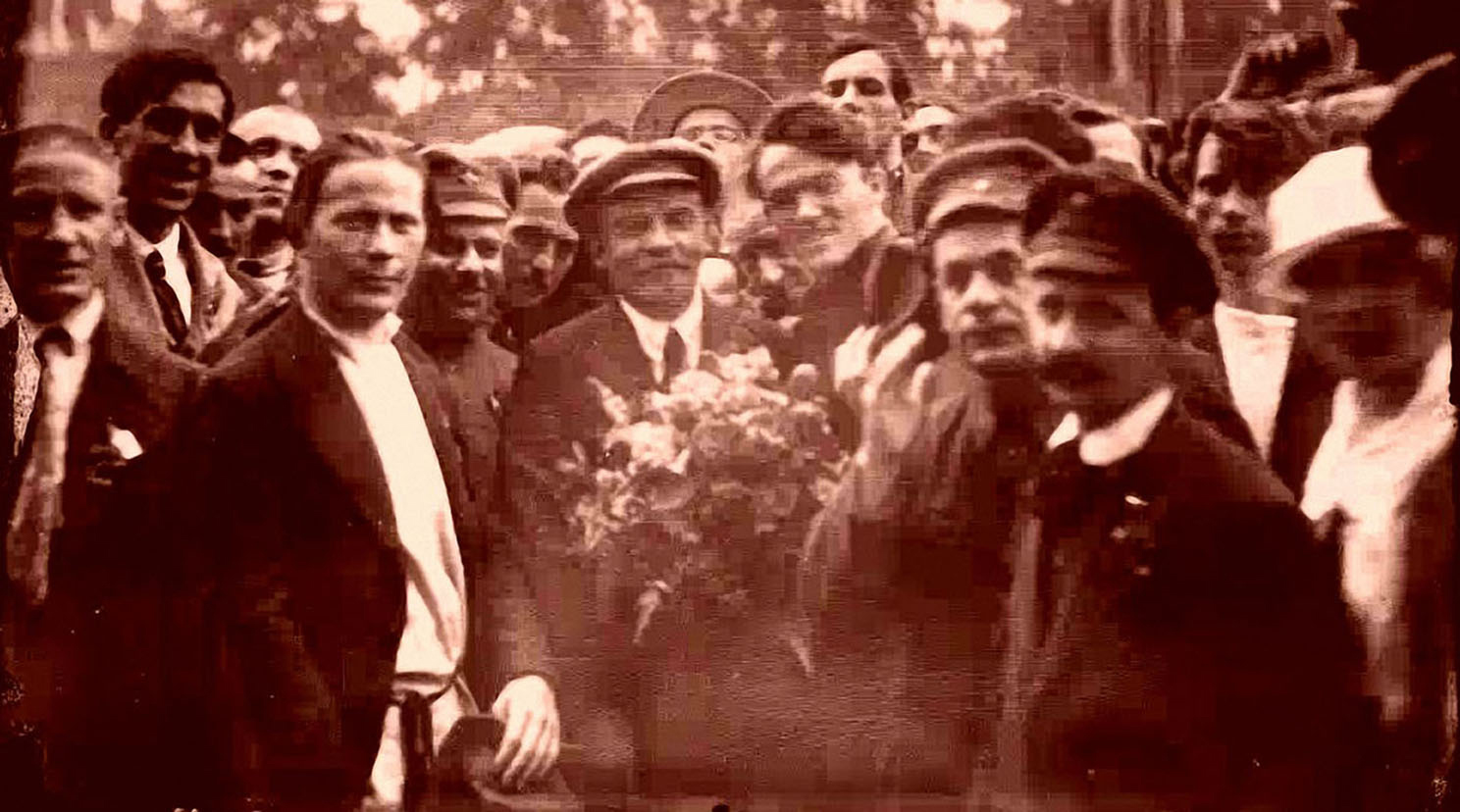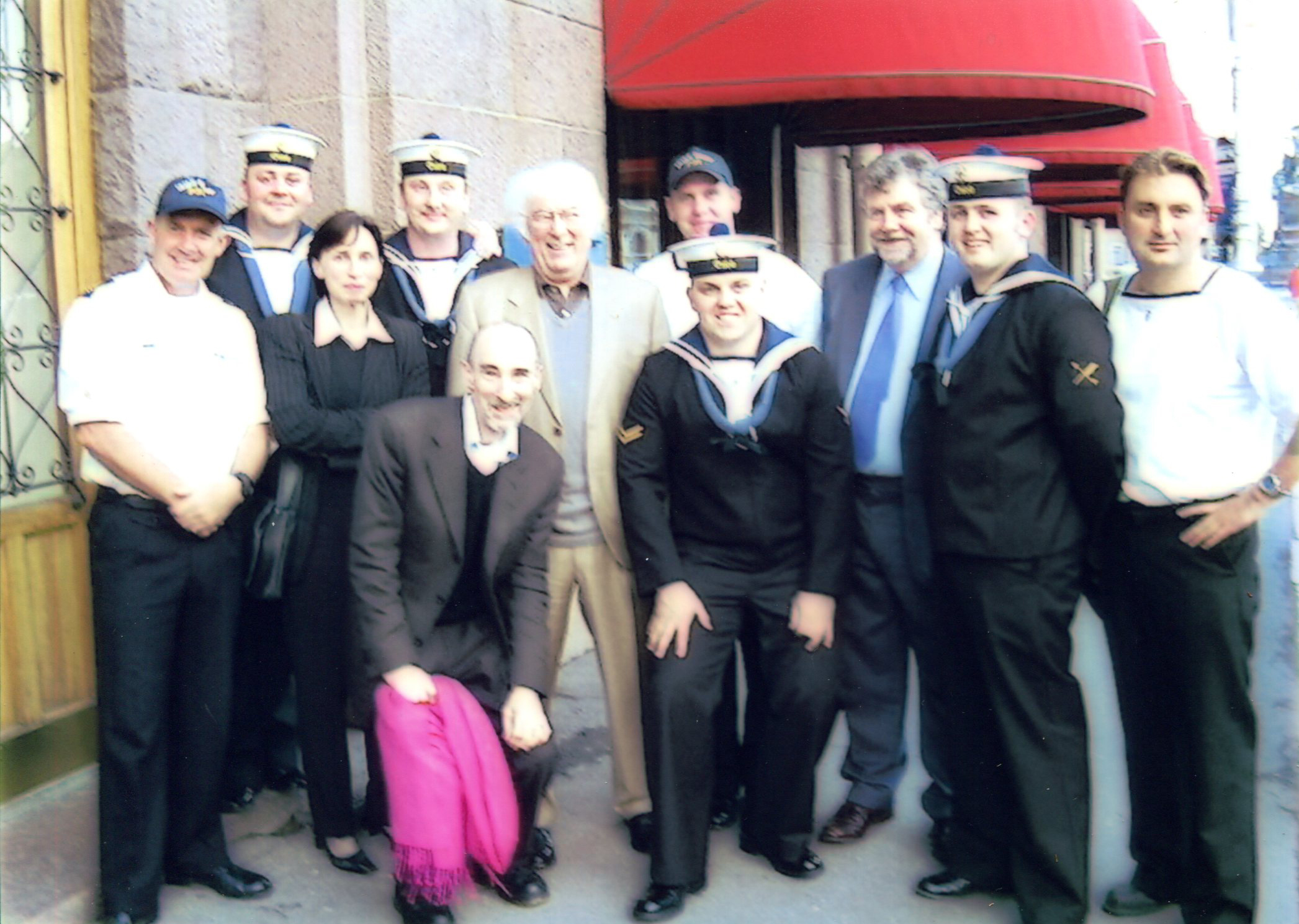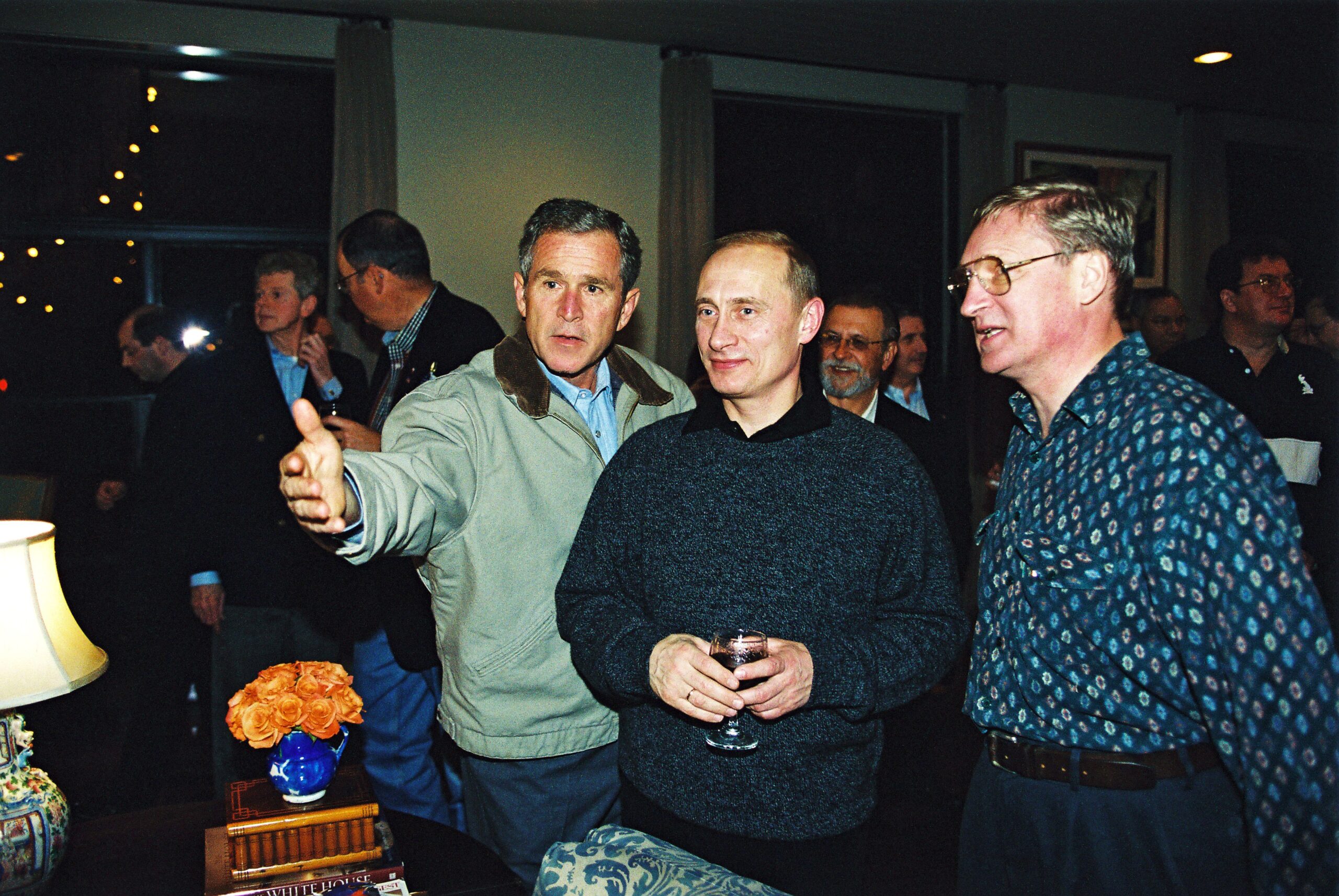By James Sharkey
It was 5 April 1974, my 29th birthday. I had just arrived in Moscow with instructions from the Department of Foreign Affairs to open Ireland’s first ever embassy to the USSR. On the journey into the city, like most visitors, I was deeply moved by the impressive anti-tank memorial that marked the farthest point east of the Nazi assault on the Russian capital. Here, in December 1941, heroic Russian resistance, allied to the ferocious rage of ‘General Winter’, shattered the myth of German invincibility and began Europe’s salvation from the horrors of the ‘1,000-Year Reich’. Russia’s deeply rooted fear of encroachment and encirclement is grounded in this history of invasion and, whether rational or not, it is a political reality that must be managed with sensitivity and prudence.

DÉTENTE
These weighty thoughts of war and peace lightened as the spires of the Kremlin came into view. In Moscow snow was melting and spring was in the air; internationally, the warming of East/West relations was slowly reducing the hostility and tensions of 25 years of Cold War between former wartime allies. US President Richard Nixon and Soviet leader Leonid Brezhnev had met and signed trade and cultural agreements and, most significantly, crucial nuclear arms limitation pacts. The danger of war in Europe and the nightmare of global nuclear annihilation were diminishing. Ireland was determined to play its part in the international relaxation of tensions.
The 1970s was the decade of détente. It witnessed a series of agreements and understandings that involved not only the stabilisation of US/Soviet relations but also the easing of fear and suspicion on the European continent. This included ‘Ostpolitik’, initiated by West German Chancellor Willy Brandt and continued by his successor, Helmut Schmidt—the normalisation of relations with East Germany, Poland and Russia, and the simultaneous admission of the two Germanys to the United Nations. At the multilateral level, the initiation in 1973 of force reduction talks (so-called MBFR) between NATO and the Warsaw Pact was a big step forward. In differing format and content, these talks continued through the 1970s and 1980s, eventually producing the Treaty on Conventional Armed Forces in Europe (now, unfortunately, in suspension).
In parallel, politically, and very much the weathervane of multilateral détente, was the CSCE, the Conference on Security and Cooperation, which was open on an equal basis to every European country, the US and Canada. Importantly, all participants had veto power over final decisions. Ireland participated actively in the CSCE, both as a new member of the EEC and as a non-aligned country with a unique perspective on issues such as self-determination, freedom of movement and the inviolability of frontiers. The CSCE continues today as the OSCE, the Organisation for Security and Cooperation in Europe.
Détente, of course, had its powerful critics who argued that ‘Communist Russia’ could never be trusted. The then rising star of the UK Tories, Margaret Thatcher, famously likened détente to appeasement. Similarly, Ronald Reagan, emerging in the US as the champion of the Republican Right, campaigned against what he came in time to call the ‘evil empire’. President Jimmy Carter and his hawkish National Security Advisor, Zbigniew Brzezinski, in power during the later ’70s, prioritised human rights as the centre-piece of international dialogue and challenged Soviet goodwill and intentions. Crucially, neither Carter nor Reagan lost sight of the danger of nuclear miscalculation, and cautious engagement in strategic arms limitation talks continued even after the Soviet invasion of Afghanistan in 1979, which brought the decade of détente to an end. ‘Trust but verify’ became the new slogan.

IRELAND AND THE USSR
Ireland also had its naysayers to improved relations with Soviet Russia. These were found on the conservative (confessional) wings of both major parties, though declining in influence as the Vatican embraced détente and opened negotiations with Eastern Europe. As it was, we were among the last ‘western’ countries to have a resident embassy in Moscow.
We had hoped to move to full embassy status in the late 1960s but the Soviet invasion of Czechoslovakia put paid to that. In 1973 the new Fine Gael/Labour coalition government decided that the time had come for full diplomatic ties, and an agreement was reached at the UN in New York on the reciprocal opening of embassies but with limitations on the numbers of diplomatic staff. This was to ease fears in Dublin and London (largely unfounded) that a resident Soviet embassy would facilitate KGB meddling in Northern Ireland.
NEW EMBASSY COMPLETELY BARE
My immediate task on arriving in Moscow was to turn the key in the door of our brand-new embassy. I was met on the steps by a small welcoming committee who greeted me as Ireland’s first resident representative to the USSR. As someone who had grown up on the fringes of the Bogside in Derry and who had the good fortune to specialise in Russian history, I was exhilarated. I have often joked that if my wife had been there I would have carried her over the threshold! The embassy, of course, was completely bare—no telephones, no telexes, no furniture, no electricity. And no staff.
The priority was to get everything ready as best I could for the arrival of our first ambassador, Edward (Ned) Brennan, who was moving from Brussels, where he had been one of our top EEC negotiators, and who was also a respected Sovietologist. This made me not only interim chargé d’affaires and participant in EEC ambassadorial discussions on great affairs of state but also the embassy’s temporary handyman—apprentice electrician, plumber, plasterer, carpenter and cryptographer all rolled into one. My erstwhile and sometimes useful partner in this mighty enterprise was an organisation called UPDK, the technical arm of the Soviet foreign ministry, with responsibility for the maintenance of foreign embassies. They insisted above all on supplying Russian staff.

MOSCOW IN 1974—DIMLY LIT, DULL AND DREARY
Russia is, of course, the largest country in the world (with eleven time zones) but also today, to the envy of many, one of the potentially richest, given the value, volume and diversity of its natural resources. Moscow is now Europe’s largest city and one of the most glamourous, vibrant, brightly illuminated high-tech cities in the world. In 1974 it was a very different story. Moscow was dimly lit, dull and dreary, with the few neon signs proclaiming the virtues of Marx, Lenin and the glories of past socialist achievement. This was a mixture of nostalgia, self-delusion and bluster. Carrying the burden of a crippling military budget, Brezhnev’s Russia was just about staying afloat, buoyed up by the oil price bonanza of the mid-1970s and ever-enlarging and very welcome overseas investment.
Heavy industry, the backbone of the Stalinist economy, was increasingly unproductive. Worker morale was low. Agriculture was failing. The Chicago grain price was determined by the estimated annual shortfall in the Soviet harvest and the subsequent requirement for imported North American wheat. Shops were nearly empty of household goods. Things that we took for granted, like decent furniture, modern clothing, cosmetics and shampoos, even workable light bulbs and sharp-edged razor blades, were hard to find. Ordinary Russians survived on courage, stoicism, resilience and good humour. A typical joke was ‘the state pretends to pay us and we pretend to work’. Soviet isolation from the high-tech consumer revolution then beginning would ultimately accelerate its downfall.
Private cars were a rarity though essential for doing. In roubles a domestically produced Lada cost ten years’ wages, which was beyond the dreams of most Russians. However, diplomats and senior party apparatchiks had the benefit of dollar-denominated foreign currency coupons and coupon-only supermarkets where scarce items were accessible and affordable. With a suitcase bulging with coupons, I soon sought out the automobile superstore, where from a forecourt of several dozen Ladas, all white, I chose one that was suitable. Under the supervision of my very capable UPDK-supplied secretary, Natasha, I quickly learned to navigate the streets of Moscow and, more importantly, the red tape and roadblocks of the Soviet bureaucracy. Thanks also to a discreet second-hand market in office furniture and equipment, we were able to get the embassy ready for basic everyday operations. Modern furniture and fittings would arrive in due course from Dublin.
IRELAND’S FIRST UNOFFICIAL REPRESENTATIVE
One of my first engagements as chargé d’affaires was to organise a reception for the Ireland–USSR Society, who had arrived in Moscow to celebrate the opening of the embassy. I welcomed them to our near-empty building and greeted them proudly as Ireland’s first official representative in the USSR. After the formalities were over, a grey-haired gentleman took me aside and said, ‘I am glad you told us you were the first official representative because I was the first unofficial representative here’. That person was Roddy Connolly, James Connolly’s son, who had been smuggled into Petrograd/St Petersburg to explore ties with Bolshevik Russia. He was well received. He met Lenin, an admirer of his father, and was a delegate at the second congress of the Comintern, the Communist International, in 1920.
Similar exploratory encounters with a view to joint recognition took place in New York, where de Valera was then based, and in London and Moscow. Tyrone Republican Patrick McCartan was our principal go-between. In New York we gave a loan of $20,000 to the cash-strapped Bolsheviks, receiving as security what was described as a selection of Romanoff crown jewels, but all to no avail. The Bolsheviks were confronting civil war and a huge and hostile British-led multilateral military intervention. For our Russian interlocutors, Maxim Litvinoff and Georgy Chicherin, normalisation with imperial Britain was the pressing priority. Relations with the fledgling Irish republic took second place to the negotiation of a trade agreement favoured by Lloyd George, which carried the promise of political recognition by a major European power.
Our brief though ardent courtship of the Soviets was very much atypical in the long history of relations between Ireland and Russia, two countries with very few historical connections. In Russia in the eighteenth century the military prowess of specially recruited ‘Wild Geese’ families like the Brownes and Lacys was much appreciated, as was in the following century the piano mastery of Irish composer John Field, a resident of St Petersburg. In Ireland during the nineteenth century British imperial Russophobia progressively became the major influence, accentuated by the role of Irish-British regiments in the Crimean War and along India’s north-west frontier, where the ‘great game’ was constantly at play.
RELATIONS POST-INDEPENDENCE
Later, in our post-independence period, Free State governments viewed Russia as a godless republic and Stalin’s religious persecution was a persistent concern. In 1934 Eamon de Valera, a champion of the League of Nations, made a point of supporting Soviet membership while at the same time emphasising human freedom and religious tolerance as fundamental principles of civilised conduct. This emphasis on human rights and religious freedom certainly made an impression on Soviet diplomats. After the Second World War, the USSR vetoed Irish membership of the United Nations several times, highlighting both our wartime neutrality and lack of diplomatic relations. They may also have seen us as a potentially hostile member state. Only in 1961, six years after we joined the UN, were relations between our two countries fully and formally normalised.

AMBASSADOR IN 2001
I returned to Moscow as Ireland’s ambassador in 2001, to the same embassy that I had opened in 1974 but in a world where the USSR no longer existed. It was President Vladimir Putin who welcomed me to the Kremlin and who made it clear that Ireland was a country that he believed he could trust. Moreover, Ireland’s profile had improved quite considerably since the 1970s. Russia was now a major importer of frozen Irish beef, and aviation ties were close and highly visible at major airports. The Riverdance cultural explosion had generated interest in traditional Irish music and dance. Moscow had one of the liveliest and most colourful St Patrick’s Day parades in all of Europe, and the ‘traditional Irish pub’ craze was taking off.
President Putin was, of course, the darling of Russia. He had saved it from impoverishment, famine and fragmentation and had delivered pensions, salaries and key services where they were most needed. He was also something of a superstar in the West. The Americans, after 9/11, requested his full cooperation on security priorities and he was quick to extend it. European leaders were also in competition to woo him, and in 2003 all major political personalities, including Taoiseach Bertie Ahearn, participated in the celebration of St Petersburg’s 300th anniversary, where Michael Flatley was a guest entertainer. The embassy also organised its own celebration of the anniversary with a formal visit by the LE Eithne and participation by Seamus Heaney, pianist Mícheál O’Rourke and painter Felim Egan. The symbolism of the St Petersburg anniversary was that it was not simply Putin’s birthplace but also Russia’s historic doorway to close relations with Western Europe. In 2003 everyone seemed to want to keep this doorway open wide. Instead, the corrosion and collapse of this short-lived phase of East/West entente turned out to be a huge diplomatic catastrophe, with the people of Ukraine as its tragic victims.
James Sharkey is a former Irish ambassador to the Russian Federation.
